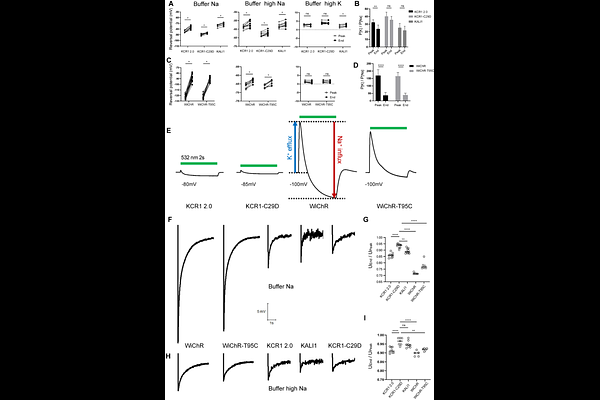Stabilized ion selectivity corrects activation drift in kalium channelrhodopsins

Stabilized ion selectivity corrects activation drift in kalium channelrhodopsins
Duan, X.; Zhang, C.; Ott, S.; Zhang, Z.; Ruse, C.; Dannhaeuser, S.; Jacobi, R.; Ehmann, N.; Sachidanandan, D.; Nagel, G.; Heckmann, M.; Kittel, R.; Gottschalk, A.; Claridge-Chang, A.; Gao, S.
AbstractEffective optogenetic inhibition of neuronal activity requires tools that can reliably silence neurons across diverse conditions and cell types. Potassium-selective channelrhodopsins (KCRs) have emerged as promising alternatives to chloride-conducting channels for optogenetic inhibition of cellular excitability, but they exhibit dynamic ion selectivity shift under prolonged or intense illumination, causing activation. This inhibition to activation transition limits their utility for silencing circuits. Through behavioral and electrophysiological analyses in Drosophila, and C. elegans, we found that the C29D variant of KCR1 maintains the most stable potassium selectivity among tested variants. While other KCR variants showed excitation defects, KCR1-C29D consistently provided robust in vivo inhibition across cell types, illumination conditions, and species. Electrophysiological recordings revealed that while most KCRs show declining PK/PNa ratios during illumination, KCR1-C29D maintains stable ion selectivity, consistent with its robust silencing capability. This work resolves a key limitation of KCR optogenetics and shows that KCR1-C29D is a superior tool for reliable inhibition. Our findings offer valuable mechanistic and practical insights for the design of next generation optogenetic inhibitors.